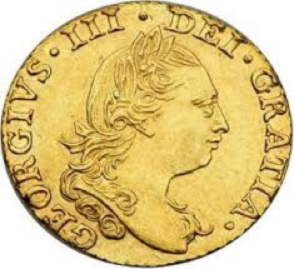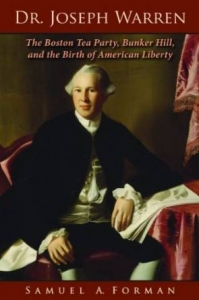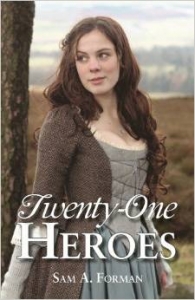Coins in Revolutionary America
Blog submission by Sam Forman to Lora Innes’ The Dreamer
PART 1:
Ms. Innes invited me to write a guest blog on circulating money of the early American Revolution. She needs a crib sheet for Bea, who has gotten herself into yet another nail-biter. Recall that our Beatrice accidentally spilled a purse-full of coins in front of sticky-fingered Joshua Loring. The despicable jailer of uncle Hercules wants a payoff of the guinea. Huh? Which one, among coins scattered on the floor, is the guinea? The stakes are high, and so are the gallows, if her ignorance of money leads to uncovering the spy ring involving a certain heartthrob apple farmer. It is a situation that can make a girl nervous, what with the cuckolded Loring doubtless as interested at sneaking a peak of Bea’s petticoats as he is in extorting some easy money.
Perhaps Bea will be tempted to hush up Loring with a few dollars swiped with her new Apple wristwatch thingee or a mall-friendly debit card. No, that will not do for the 18th century heroine. If she doesn’t learn quickly about money and coins, disaster awaits. Even if she somehow survives this scrape unscathed, payoffs and bribes are common among spies. Time for a crash course in colonial coins and currency!
Americans, from earliest colonial days, have always had issues with money. As an outpost in England’s colonial Atlantic world, there was a continuing gravitational pull of silver and gold “hard money” to merchants in the mother country. Colonists had to pay for desirable things made in England or shipped from elsewhere in the empire. Later, add British taxes, the tyrannous kind without representation, and a volatile situation might arise. Meanwhile, doing business with people from other countries like France, Holland, and particularly the big Spanish colonies in Central and South America, begged for a medium of exchange more mobile than barter of things for other things. Even enterprising American Indians on the frontier demanded to know the value of a buck when they traded its laboriously hunted and prepared skin into the international leather and pelt trade. Many a beaver, bobcat, and bison found themselves on the wrong side of this equation. We will leave the latter as a lesson for Bea’s biology and ecology class.
New Englanders, long before disputing allegiance to Great Britain, grappled with the shortage of circulating money. They accepted Indian wampum in the 17th century, as did Dutch traders based in Manhattan. They used accounts books a lot, figuring bartered transactions in money denominated notations that never actually exchanged hands. Some businessmen attempted to make private tokens to be passed in general business transactions. That put you at risk of being labeled a counterfeiter.
Massachusetts attempted its own coinage. As the value of the metal in coins was universally expected to be close the coin’s face value, there was never enough copper, silver, or certainly gold, to sustain a locally made coinage in colonial British North Americas. When political ties with Britain loosened for a while during the English Civil War, Massachusetts introduced its own New England coinage. English overlords were not pleased, as the right to coin money is jealously reserved by sovereign governments. Through decades of successive issues named after the pictured pine, willow, and oak trees, all these coins show the same date 1652. What really scuttled this coinage was the fact that there was never enough of it, it tended to leave the provinces for cash payments or melting, and better foreign coins constantly came in from merchant ships.
Judging by the wear shown by many surviving examples, some of the New England coinage circulated for a long time. The Warrens and Bea’s family may have encountered a few of these antiques in late colonial Boston.

If you look closely at this silver shilling, you may conclude that you are not the first person to have trouble spelling ‘Massachusetts.’
So, if this is a shilling, why the twelve in Roman numerals? It is part of English denominations that Bea will have to master. Twelve pennies to a shilling. Twenty shillings to a pound. Smaller pence coins were generally made of copper, shillings of silver, and multiples of pounds in gold. Here is Bea’s crib list of English denominations, nicknames in common use, and some factoids she can use to blend in among British occupiers of New York City:
- Farthing – ¼ penny or pence. These were a rarity as a circulating coin by 1776
- Half pence – a copper coin about the size and weight of a modern American quarter. British officers in occupied Boston complained that off duty soldiers got themselves drunk and into trouble on cheap local rotgut rum at only a half pence “copper” per drink. Meanwhile, Dr. Joseph Warren was handing out bagfuls of these weighty small denomination coins to a mysterious individual just prior to sending Paul Revere on that famous Midnight Ride. Coincidence?
- Penny – the basic unit of copper coins
- Twopence – “tuppence” in the Walt Disney movie Mary Poppins
- Threepennce, sixpence – multiples of a penny. Half shillings could be made of silver. When modern Bea gets married, if she lives that long, she will want to wear something borrowed, something blue, something old, something new, and a sixpence in her shoe.
- Shilling – basic silver coin often used in small transactions. Twelve pence to the shilling. An unskilled laborer might earn two shillings for a day’s work. Massachusetts militia service was reimbursed about 1 shilling per diem by the pre-Revolutionary War Provincial Congresses.
- Pound – also Pound Sterling, consisting of twenty shillings. Bea, note this carefully for it will relieve your stress: the colloquial name for gold pound sterling coin was ‘guinea.’ The nickname came from the West African source of gold bullion used to make some of the coins. During Bea’s 1776 sojourn in New York, gold guinea coins worth 20 shillings, and half guinea coins worth ten shillings would be found in circulation.
Here is a guinea gold coin. The denomination is inconveniently not on the coin, a typical situation for many of the coins of the time:

Here is a half guinea of 1781, close to our time period

This is a silver shilling of George II:

A British half penny of the sort circulating during the American Revolution:


 Sam Forman is the modern biographer of Dr. Joseph Warren (Pelican, 2012). The Continental Dollar makes a cameo appearance in his upcoming historical romance novel Twenty-One Heroes (Pelican, Fall 2015), where liberty is a seductive principle for young Revolutionary Americans.
Sam Forman is the modern biographer of Dr. Joseph Warren (Pelican, 2012). The Continental Dollar makes a cameo appearance in his upcoming historical romance novel Twenty-One Heroes (Pelican, Fall 2015), where liberty is a seductive principle for young Revolutionary Americans.